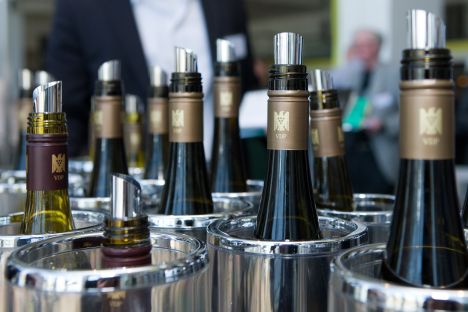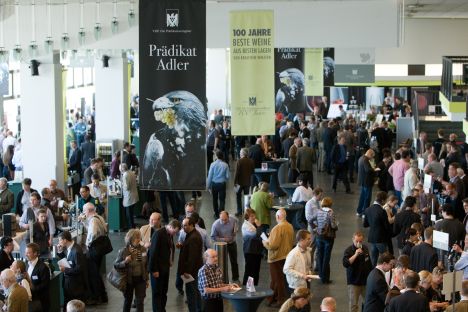In the wine industry, there are different voices on the new classification of the Association of German Prädikat Wine Estates (VDP) - many positive, but also many negative. In his report from the VDP Wine Exchange in Mainz in April this year, wine merchant Martin Kössler expresses a differentiated view: "The classification will certainly establish itself on the market, we are clear supporters, in three levels; however, whether the 'Erste Lage' between the local wines and the 'Grosses Gewächs' will establish itself as the fourth level remains questionable. To us, it seems hardly communicable. The future will tell." Marcus Hofschuster, tasting and editorial director of Wein-Plus, also welcomes the VDP initiative in principle: "As far as the classification is concerned: I am sure that the more it is tidied up here, the better off the producers concerned will be - and experience shows that the better the wines will be in the foreseeable future," he explains. Tidying up means "a clear streamlining of the range, as is inevitable under the new classification". Hofschuster considers "the reduction to one authoritative dry wine per place below the best single vineyards as well as one basic wine (per relevant variety) to be the best measure not only to give a clear, comprehensible picture, but also to then get the best out of these wines."

|
| Prof. Dr Dieter Hoffmann (Photo: Geisenheim University) |

|
| The new four-level quality pyramid for the wines of VDP members (Source: VDP. Die Prädikatsweingüter) |
At the VinoCamp Deutschland in Geisenheim at the end of June, there was a lively discussion about the sense, implementation and enforceability of the four quality levels, with participants looking at the classification from different angles (as producers, as merchants, as restaurateurs, as marketing and PR professionals, as journalists, as private wine lovers). The criticism mainly related to comprehensibility: "How is the consumer or even a wine consumer abroad supposed to understand this system?" asked wine consultant Beate E. Wimmer rhetorically. Wine journalist Helmut O. Knall said that it was not the customers who should have to learn a new system, but the producers and association officials who had to develop a quality system that the customers understood. Dirk Würtz, operations manager at the VDP winery Balthasar Ress, called the four-tier system a "great opportunity" from the producer's point of view, but admitted that the system was not designed from the consumer's point of view, but was "motivated by association policy". He was optimistic that the shortcomings, which undoubtedly still existed, would be solved soon and amicably.
From numerous conversations that the Wein-Plus editorial team has had with winegrowers, scientists, merchants and other players from the wine industry, it is possible to identify ambiguities in connection with the new VDP classification. The main points of criticism - as already indicated in some of the statements quoted above - are the classification of vineyards, the use of predicates, the comprehensibility and enforceability of the system, and sometimes even the legal admissibility of the new regulations.
There is much discussion about brands: Is the single vineyard suitable as a brand? Is the Burgundian hierarchy of "Grand Cru" and "Premier Cru" ("Großes Gewächs" and "Erstes Gewächs"), which the VDP follows, really the optimal approach, or is the new systemIs the Bordeaux system, which as a brand system is based on the principle of winery, first wine and second wine, really the optimal approach or is it not internationally more significant and also pragmatically more suitable? It is clear that a brand is one indicator of quality; another is, for example, price.

|
| The so-called grape eagle is the trademark of VDP wines. (Photo: VDP / Bernward Bertram) |
Several industry participants also find the so-called consumption of vineyards problematic: each VDP member winery can only produce one dry single vineyard from each "VDP Grossen Lage" and each "VDP Ersten Lage" that it has. The classification of a vineyard as "VDP Grosse Lage" or "VDP Erste Lage" is unambiguous, i.e. the same vineyard cannot have a different status with different producers. Critics in some regions see an intensive need for coordination here and also potential for conflict, because - so the accusation goes - there is no logic in the distinction between "VDP Erste Lage" and "VDP Grosser Lage". So is the classification more or less arbitrary, based on the consensus of the regional members?
And a third frequently mentioned doubt concerns the market relevance of the new system: Does the orientation towards the four levels do justice to the real demand situation, the "product reality"? Can the renunciation of the site designations for "VDP Ortsweine" and "VDP Gutsweine" be compensated by higher sales of more expensive single vineyards? Can enough dry top wines be sold at corresponding prices, while in the public and especially foreign perception the best German wines are residual or noble sweet? And how will sweet Prädikat wines be demanded, since according to the new regulations dry wines from "VDP Erste Lagen" and "VDP Grossen Lagen" are no longer allowed to carry Prädikat labels?

|
| At the wine fair in Mainz, the VDP wines of the new vintage are presented every year at the end of April; the presentation of the new "VDP Grossen Gewächse" only takes place in autumn. (Photo: VDP / Bernward Bertram) |
Over the next few weeks, the Wein-Plus editorial team will be dealing with these and other questions in dialogue with personalities both inside and outside the VDP. The answers will be presented in a rather loose sequence of further articles here in the Wein-Plus magazine - because the "VDP Grossen Gewächse" of the 2012 vintage, with which the new association classification comes into force, are just starting to be sold.
To Part 1 of the series of articles: "Pyramid, Prädikate, Politik".